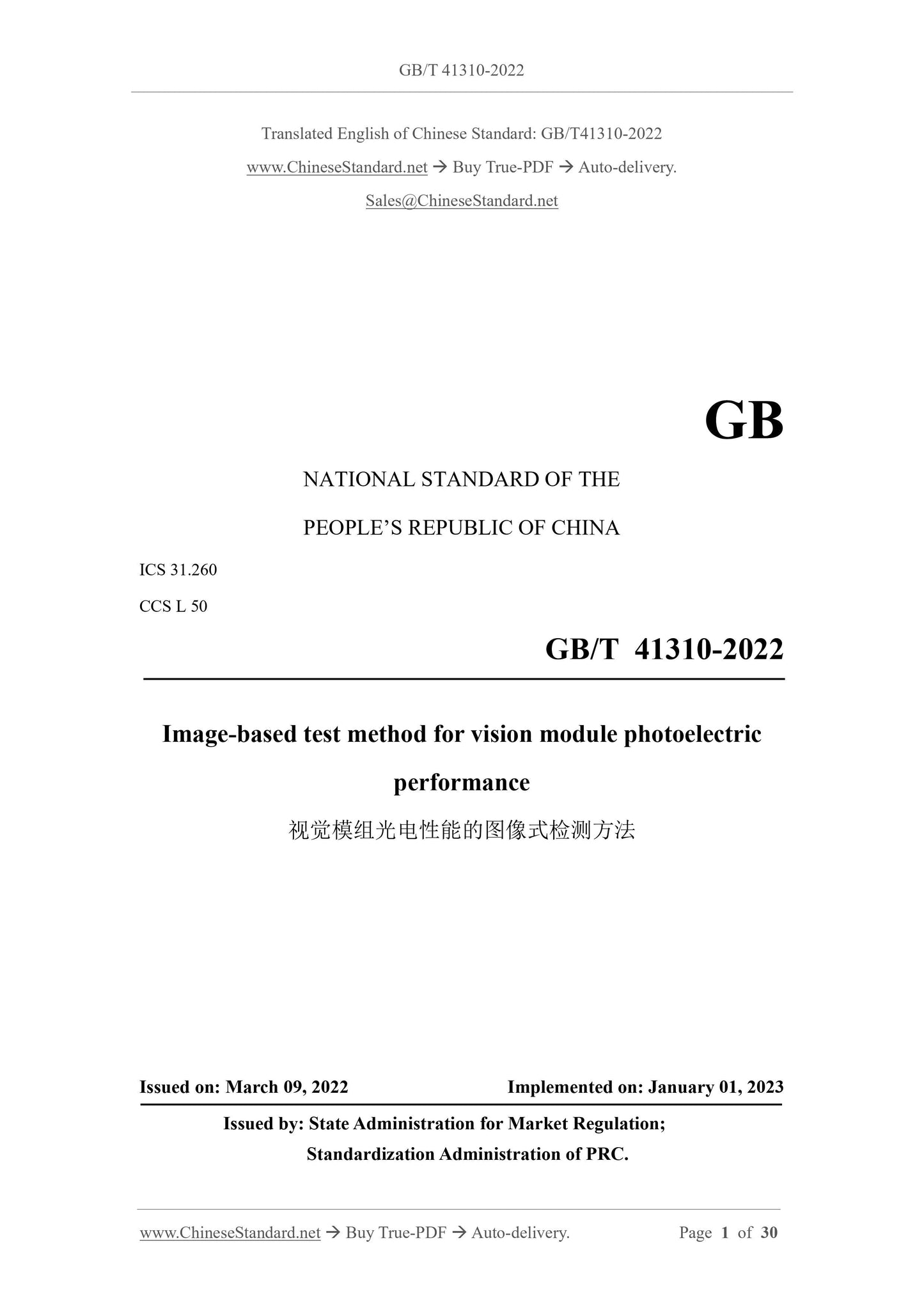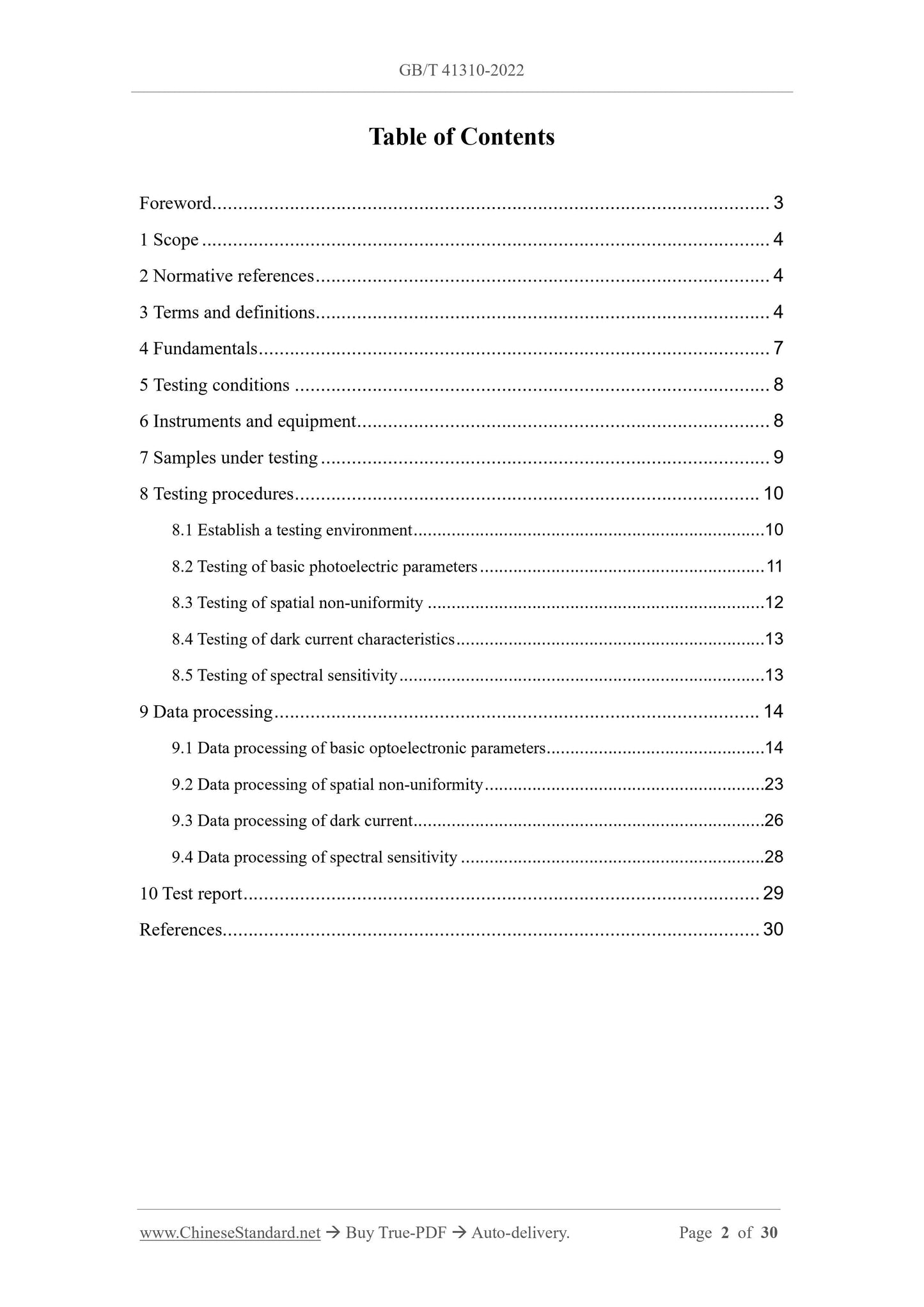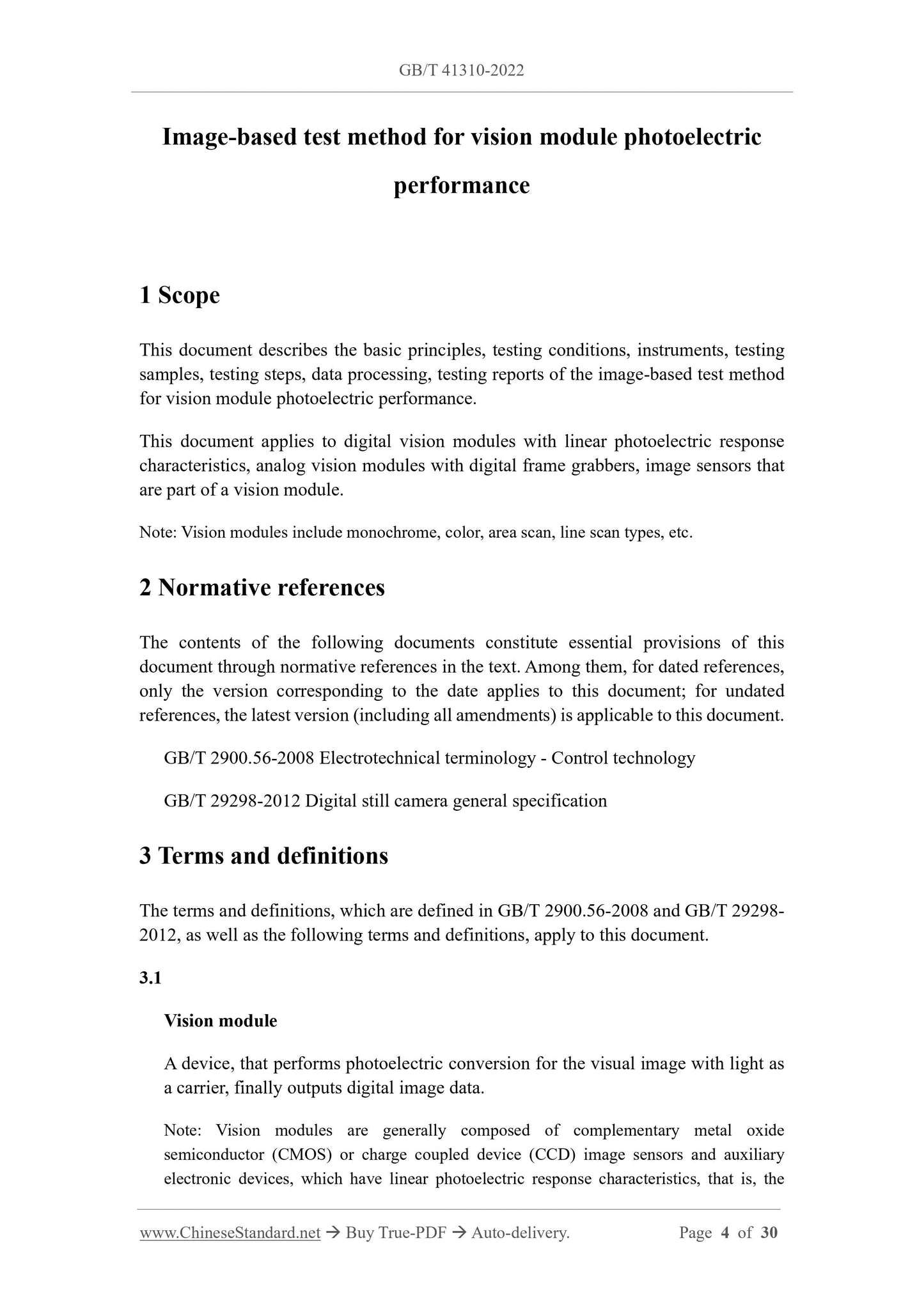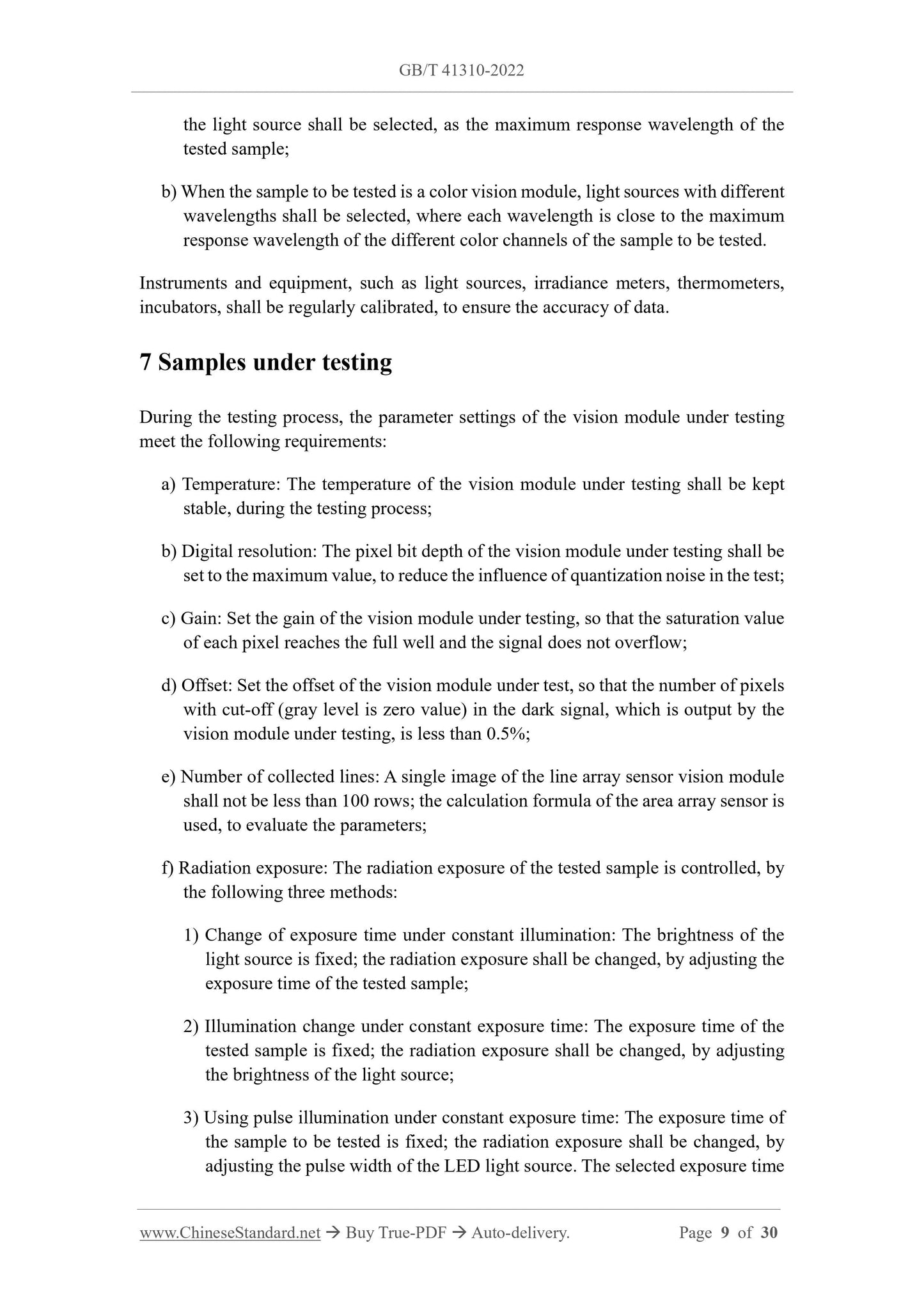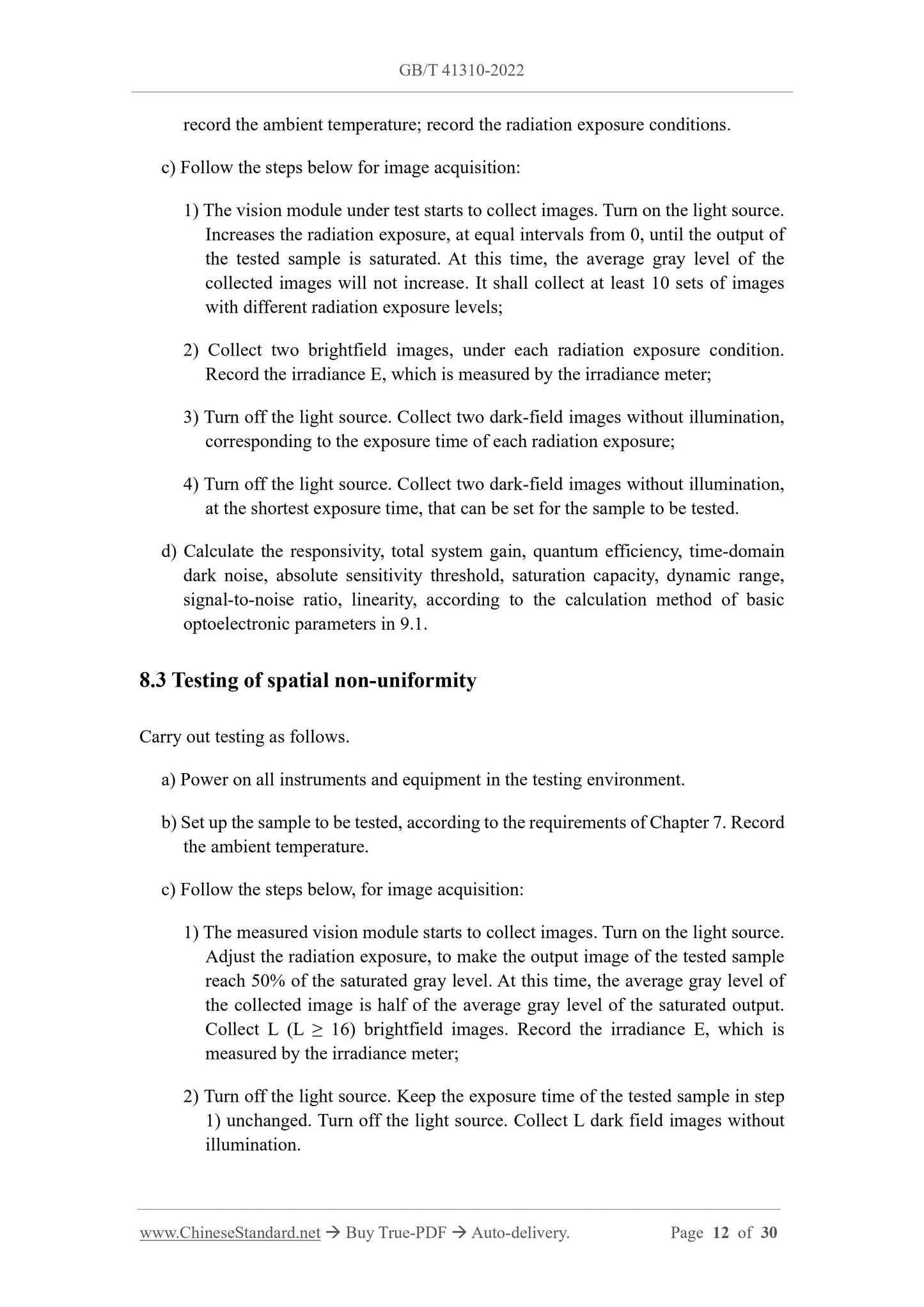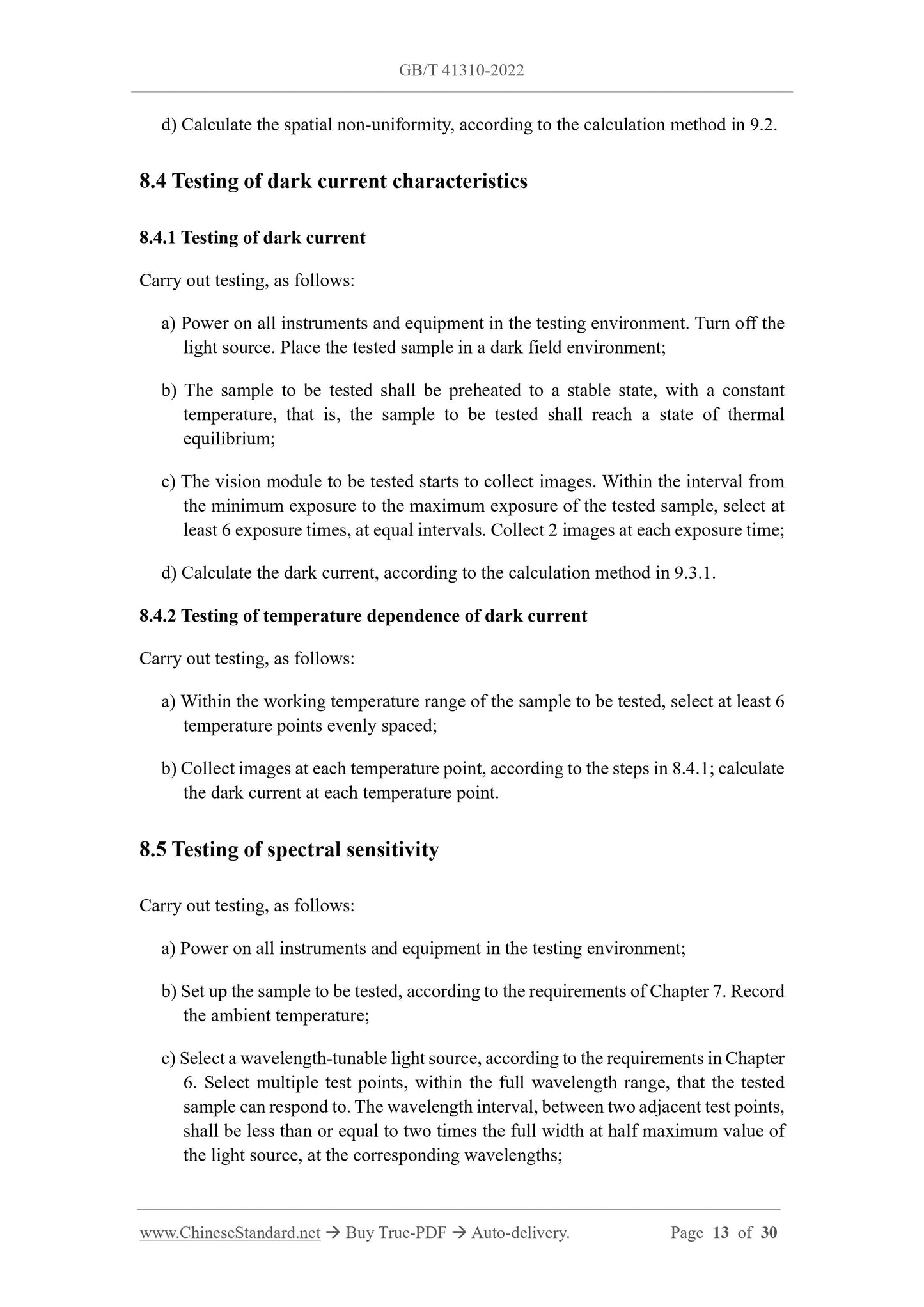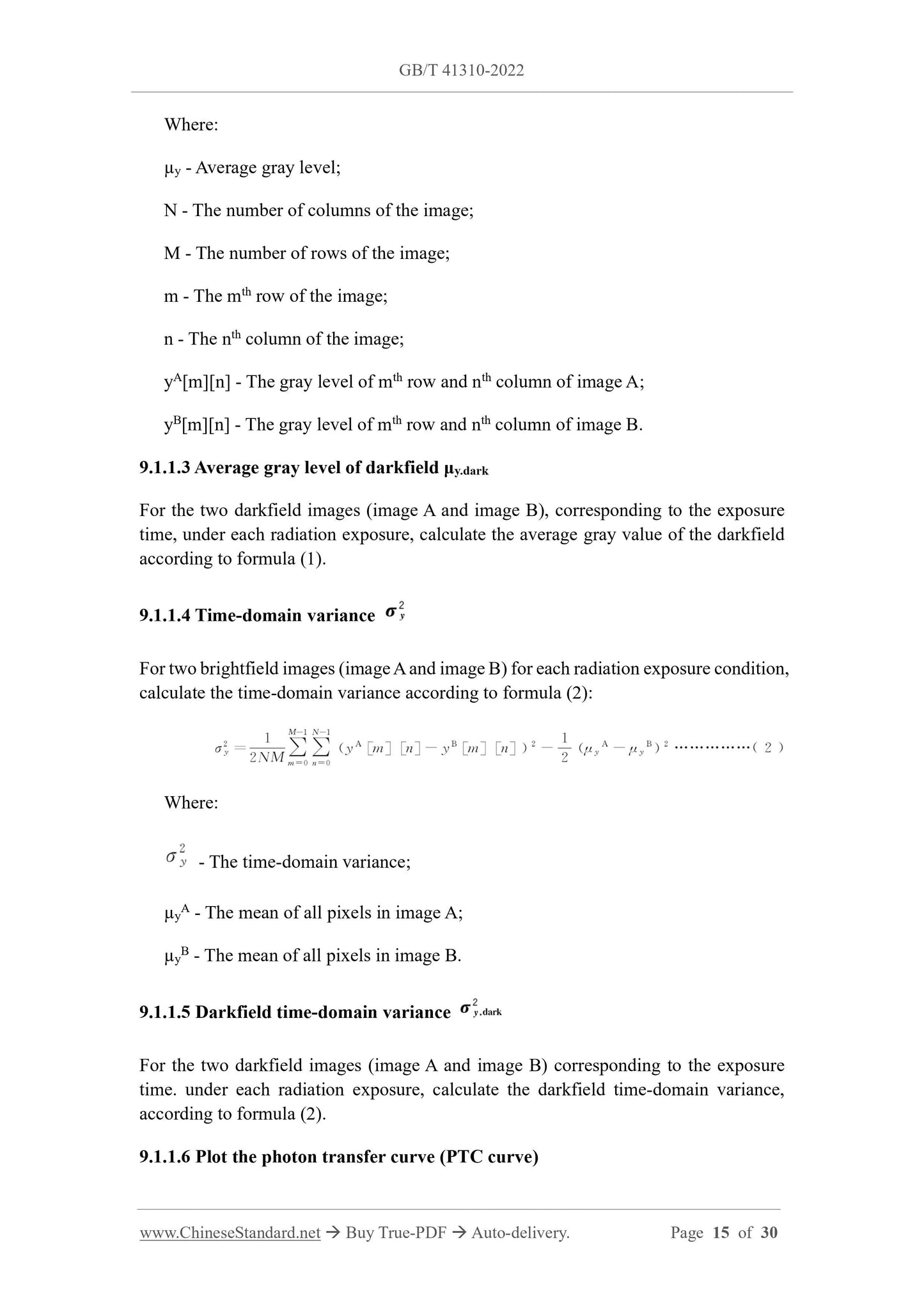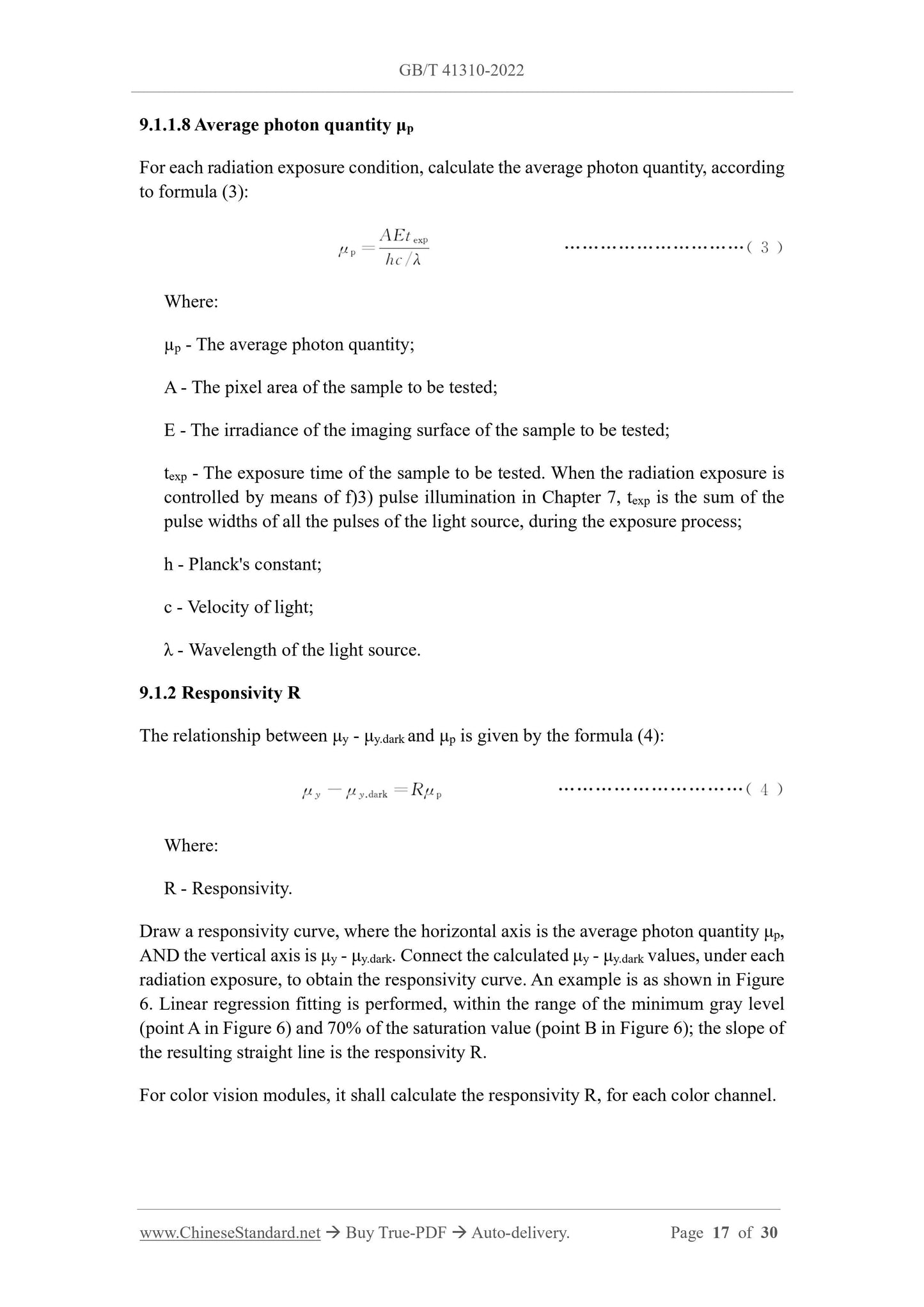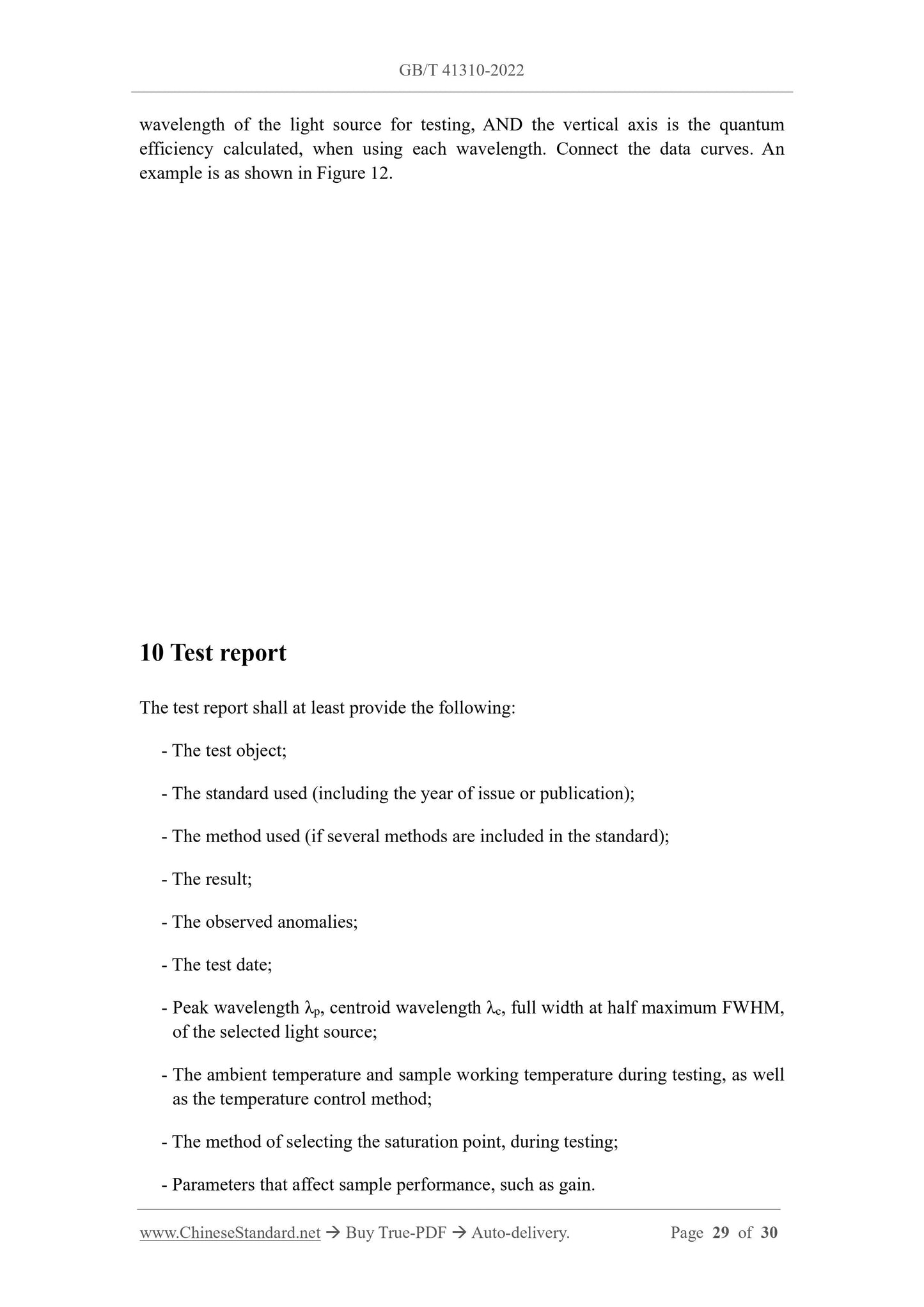1
/
of
9
www.ChineseStandard.us -- Field Test Asia Pte. Ltd.
GB/T 41310-2022 English PDF (GB/T41310-2022)
GB/T 41310-2022 English PDF (GB/T41310-2022)
Regular price
$335.00
Regular price
Sale price
$335.00
Unit price
/
per
Shipping calculated at checkout.
Couldn't load pickup availability
GB/T 41310-2022: Image-based test method for vision module photoelectric performance
Delivery: 9 seconds. Download (and Email) true-PDF + Invoice.Get Quotation: Click GB/T 41310-2022 (Self-service in 1-minute)
Newer / historical versions: GB/T 41310-2022
Preview True-PDF
Scope
This document describes the basic principles, testing conditions, instruments, testingsamples, testing steps, data processing, testing reports of the image-based test method
for vision module photoelectric performance.
This document applies to digital vision modules with linear photoelectric response
characteristics, analog vision modules with digital frame grabbers, image sensors that
are part of a vision module.
Note: Vision modules include monochrome, color, area scan, line scan types, etc.
Basic Data
| Standard ID | GB/T 41310-2022 (GB/T41310-2022) |
| Description (Translated English) | Image-based test method for vision module photoelectric performance |
| Sector / Industry | National Standard (Recommended) |
| Classification of Chinese Standard | L50 |
| Word Count Estimation | 22,274 |
| Issuing agency(ies) | State Administration for Market Regulation, China National Standardization Administration |
Share
